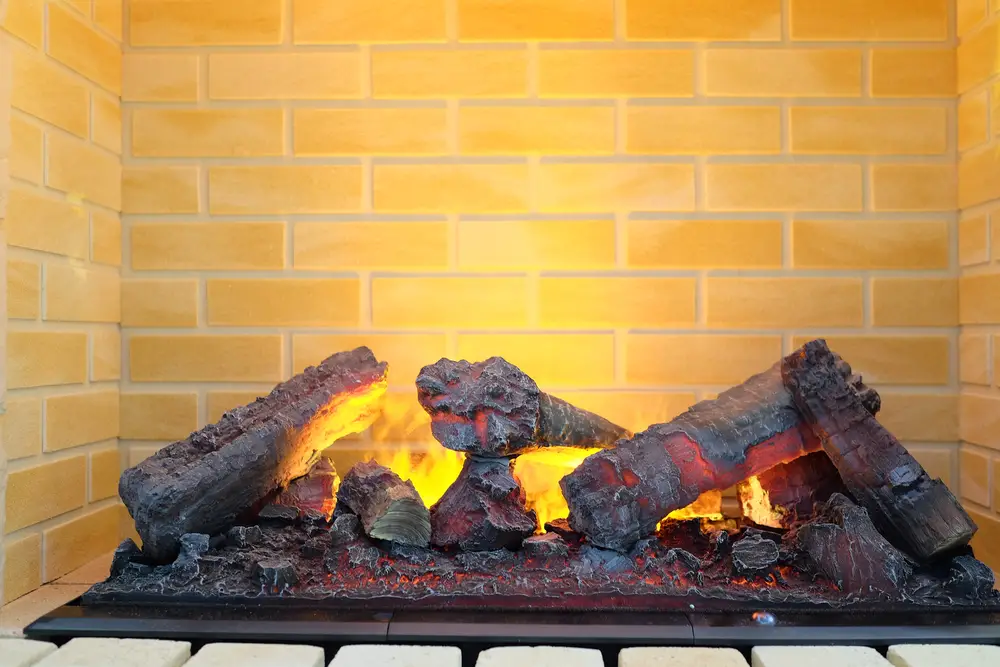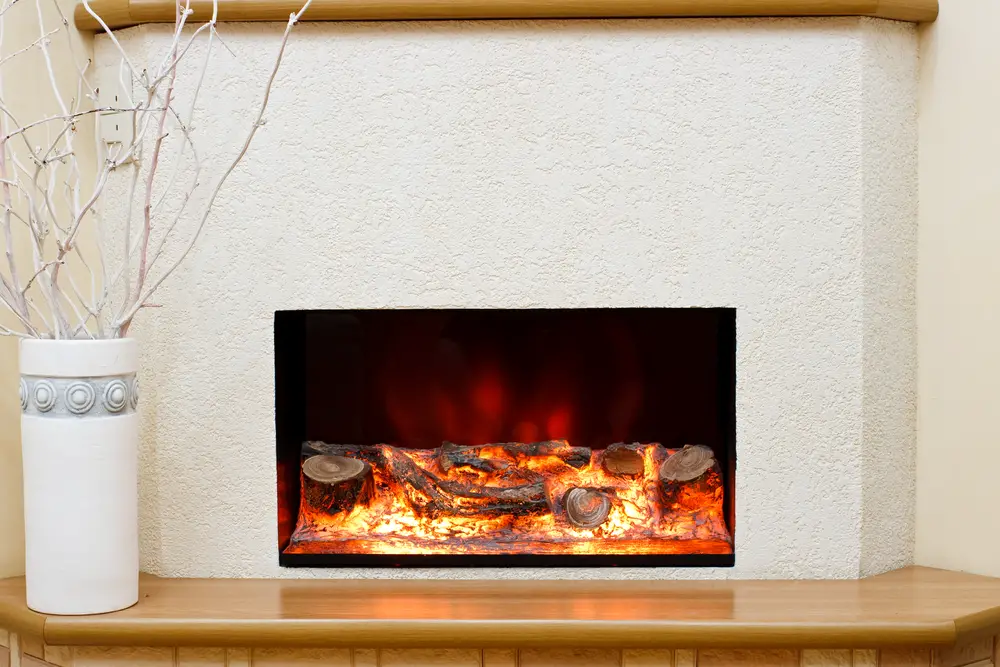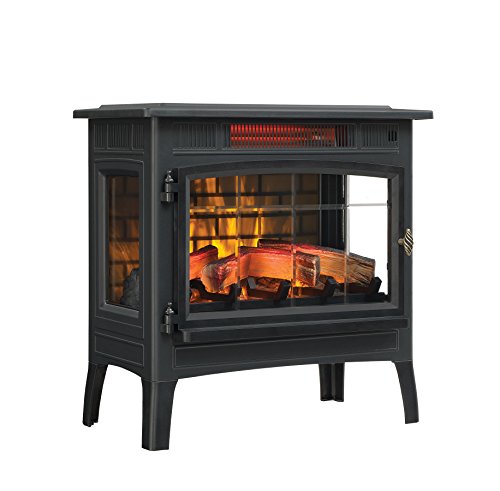Contents
Comparison summary
- Infrared will heat up a room faster, but dissipate faster, while electric fireplaces heat up rooms slower, but it also dissipates slower after being turned off
- Both are energy efficient, but the infrared is slightly more energy efficient to run
- You can get electric fireplaces in a range of styles, including freestanding mantel fireplaces, wall-mounted, recessed, and TV entertainment stands, while infrared is not available in as many styles
- Electric options produce more realistic looks, while infrared doesn’t provide a traditional burning effect
- Both need an electrical outlet
- Overall, infrared fireplaces will heat up your space faster, and not dry out the air, while electric come in more styles and are usually more aesthetically pleasing
If you’ve been looking for a heat source that appears to be permanent and adds value to your home, then you must have probably seen the fireplace heaters. Some of these fireplaces are referred to as electric, while others are referred to as infrared. In this infrared vs. electric fireplace guide, we’ll go through the most significant distinctions between the electric fireplaces and infrared fireplaces so you can choose the best one for your house.
The Big Picture
The Electric fireplace
The majority of electric fireplaces have a heating element and a fan. When the electric fireplace is switched on, the heating element becomes hot. At the same time, the fan blows air across the element and pushes heated air into the room. The cooling air in the space is drawn in by the fan, and the cycle repeats itself.
The Infrared fireplace
An infrared fireplace heats the air. A bulb that produces infrared light is hidden inside of these fireplaces. The heat is dispersed uniformly around the bulb thanks to coils, and a metal reflector directs warm light rays into the room, where objects and people nearby absorb them.
Infrared Fireplace vs. Electric Fireplace: Differences
Fuel Source

Electric fireplaces, as the name implies, operate solely on electricity. Most electric devices are suitable with residential 120-volt wall outlets and feature chromium or nickel heating elements. Even though electric fireplaces provide the appearance of a real fire, the flames are created by an LED light bulb and a reflective mirror.
Infrared fireplaces are capable of producing heat without the use of any fuel. On the other hand, some models are powered by natural or propane gas and require greater care when transporting due to their weight. Electric infrared fireplaces produce heat via a quartz bulb, whereas gas infrared fireplaces generate it by burning gases.
The infrared fireplaces utilize an LED light bulb and a reflecting mirror to simulate a fireplace. Gas-powered infrared fires still need a source of electricity because they use the same technology as gas-powered infrared fireplaces.
Coverage Area
One of the most common questions people have while deciding on a portable fireplace is the number of square feet it will cover. Electric fireplaces typically distribute heat in the space of around 400 to 500 square feet. The BTUs of a fireplace influence how much area it can cover. As a result, electric fireplaces are ideal for bedrooms and small living rooms.
Infrared fireplaces emit heat in a wider wavelength than non-infrared electric fireplaces. The average infrared fireplace heats rooms to 1,000 square feet, ideal for big rooms like living room/dining room arrangements. Because the fireplaces are twice as large as electric fireplaces, they cover twice as much space. The area immediately in front of the fireplace, on the other hand, absorbs the most heat.
Heating Time

A fan in fire features convection circulation. As a result, it might take 20 minutes for one of these fireplaces to warm a space. If the fireplace has a closed element, the wait time is somewhat longer. The benefit of its somewhat lengthy heating time is that the air remains warm for an extended period afterward, helping you save money on power.
The heating time of an infrared fireplace is considerably faster than that of an electric fireplace. When you switch on an infrared fireplace, you’ll almost immediately feel the heat.
An infrared fireplace is a wonderful option for a heat source in the morning chill or as an emergency HVAC element. An infrared fireplace delivers heat as quickly as it can be radiated, and the warmth disappears just as fast. The heat won’t stay because materials and people absorb when you switch off an infrared fireplace.
Energy Efficiency
Electric fireplaces are ideal in this situation. The energy efficiency is measured in terms of how many kilowatts of heat it generates compared to the number of kilowatts it consumes.
The efficiency of an electric fireplace with a 1:1 ratio is defined as 100 percent efficient. The majority of electric fireplaces achieve a near-100% performance, and infrared fireplaces are just as effective.
Safety
It’s also worth noting that, unlike gas stoves, electric fireplaces and infrared fireplaces are incredibly safe. Neither type of fireplace produces pollutants such as smoke, which is fantastic news for allergy and asthma sufferers. As a result, the smell of combustion will not be transferred through your carpeting, furniture, or clothing.
Both of these fireplaces are not dangerous to pets and children. Their housing is always cool to the touch. The heating element of an electric fireplace becomes hot, but it’s protected from harm by a mechanical lock. Many electric and infrared fireplaces have a timer built in to avoid overheating.
The only difference between infrared fireplaces and electric ones is their effect on the environment. The fan in an electric fireplace dries out the air over time, which may irritate your sinuses. This is not a problem with infrared fireplaces, however.
Design

Depending on your style, taste, and house size, there is a wide range of electric fireplaces to select from. If you’re going for a more classic look, an electric heater might be used to imitate the traditional fireplaces.
Several brands produce crackling, open fireplaces-with-flames and all. Perfect for a warm and intimate atmosphere. There are also modern designs available that can be wall-mounted or left freestanding if necessary. Whatever your needs or preferences, you’ll be able to discover the ideal electric fireplace to keep your living warm and stylish.
Infrared heaters, like electric ones, can be tiny and compact to suit any room. They lack the pizazz and flair of their electric counterparts in terms of appearance. In an aesthetic sense, they are usually uninteresting and lacking in personality, and they do not add much to a living area except for excellent heating.
They are available in a variety of shapes, sizes, and colors. Because of their primary style, they cannot provide the same fake fire that looks like an electric heater, which is a disappointment for homeowners seeking a beautiful centerpiece.
If a style is essential to you, electric heaters rather than infrared heaters are a good option. Electric fireplaces provide a wider range of designs and appearances, allowing you to fan your creativity’s flames. Infrared heaters, while being energy-efficient and very useful, lack the design flare available in electric versions.
Infrared and electric fireplaces are two popular types of heaters. Infrared heaters, unlike electric fireplaces, are not simply a means of heating your home; they’re also used to keep the air flowing throughout it. Different heaters generate and distribute heat in various ways, with their advantages and disadvantages. We’ll crank up the temperature on infrared and electric fireplaces to see which is best for you.
In Summary
Overall, infrared fireplaces have a higher heat comfort level than conventional fireplaces and lack any negative health effects. Although both forms of heating are energy-efficient ( Turning all the electricity they consume into heat), infrared heaters tend to operate just as well at a lower price. The only area where electric heaters surpass infrared versions is in design. Check out our gel vs electric fireplace article if you’re considering a gel fireplace!


